18 Gorgeous Flowers That Keep Blooming Into Fall
Some plants are programmed by nature to hold back their flowers until the season turns cooler. They often wait for shorter daylight hours or lower temperatures to signal the right time to bloom. Many of these flowers use summer to grow strong roots and store nutrients for later. Their late arrival keeps the garden lively when other plants have already faded.
This post may contain affiliate links, which helps keep this content free. Please read our disclosure for more info.
Chrysanthemums
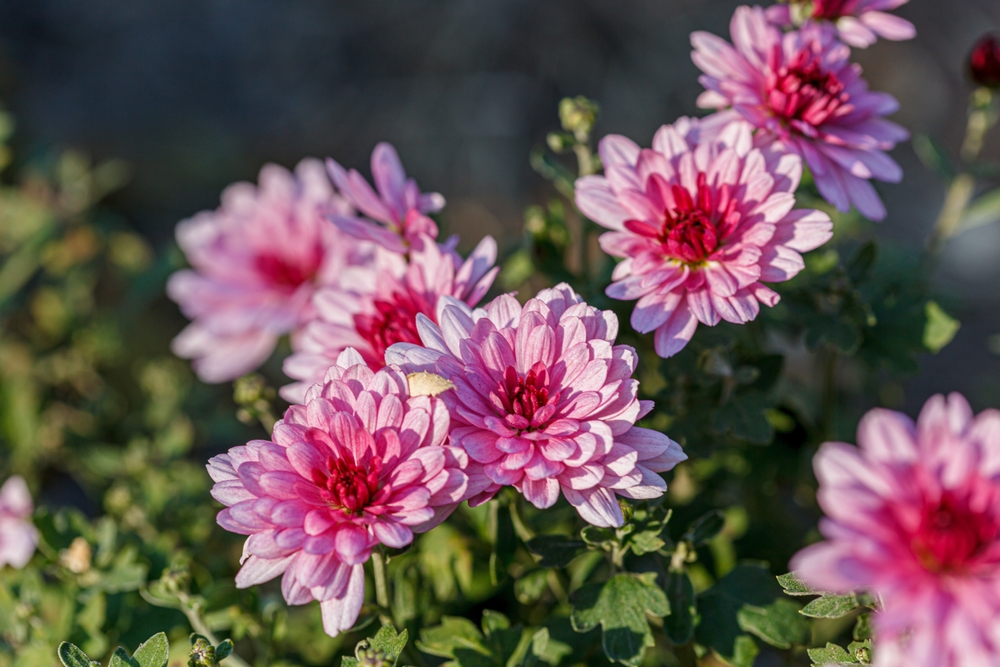
Chrysanthemums are a favorite in fall gardens because they bloom when cooler weather arrives. These flowers usually take about 14 to 16 weeks from planting to bloom. They come in a wide variety of colors including yellow, red, purple, and white. Gardeners often plant them in spring or early summer so they are ready by autumn. Their compact shape makes them perfect for borders and pots.
They thrive in full sun and well-drained soil, producing dense clusters of flowers. Regular pinching during growth months helps create fuller plants. They can bloom well into late October depending on the climate. Chrysanthemums also last long when cut, making them excellent for indoor displays. Many consider them the highlight of fall landscapes.
Asters
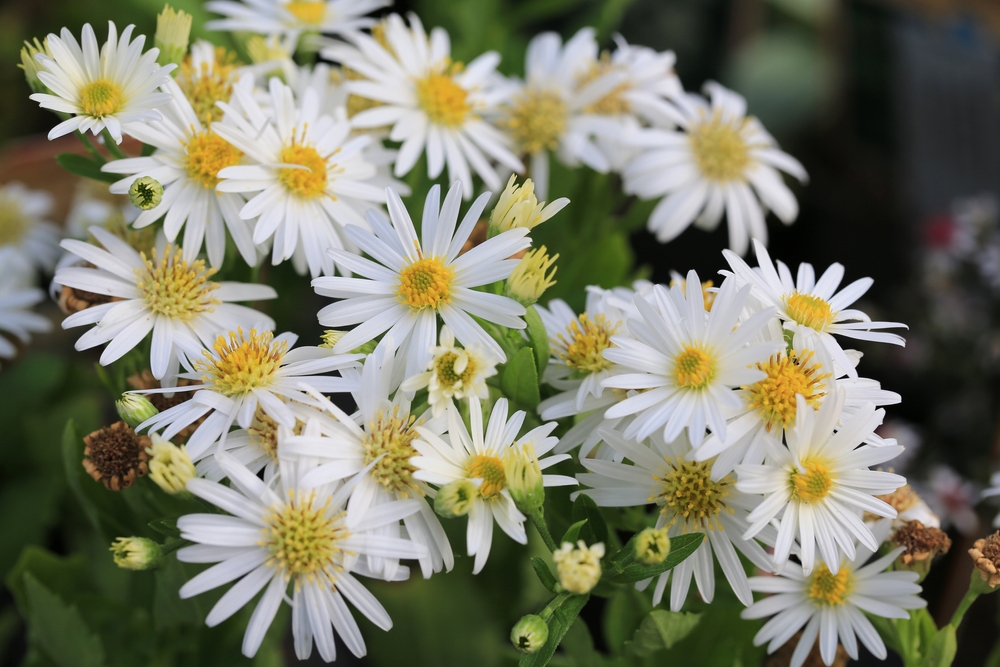
Asters bloom in late summer to early fall, often brightening gardens from September into October. They generally need about 90 to 120 days from seed to flower. Their star-shaped blossoms come in shades of blue, purple, pink, and white. These flowers attract pollinators, especially butterflies, late in the season. Many gardeners use them as a reliable source of late-season color.
Asters prefer cooler temperatures and full sunlight. They perform best when planted in soil that drains well. Deadheading spent blooms can extend their flowering season. They grow well in both garden beds and containers. Their timing makes them ideal companions to mums and ornamental grasses.
Japanese Anemones
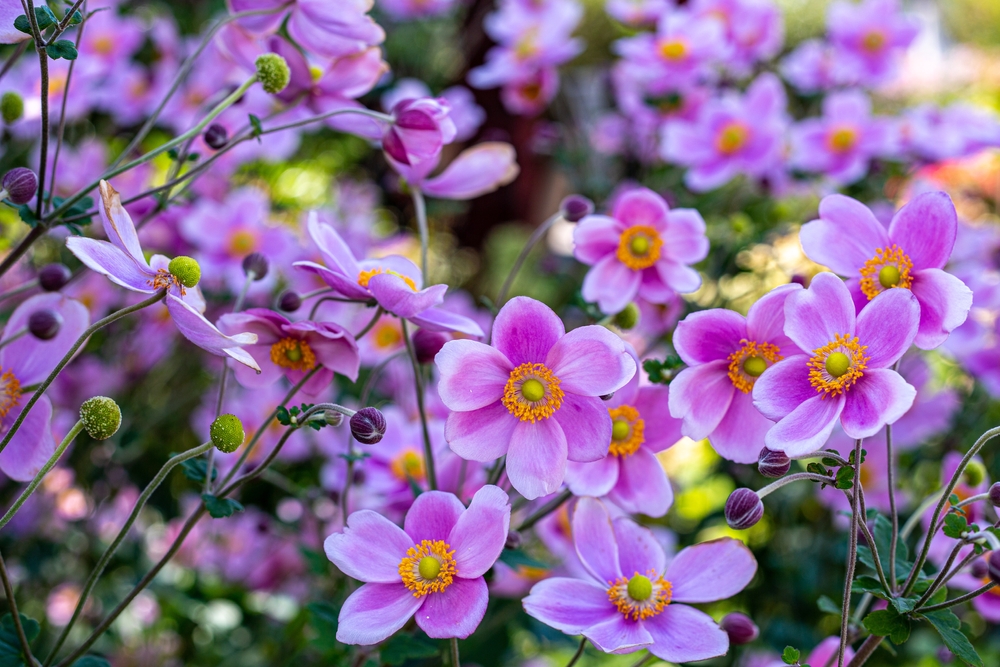
Japanese anemones bloom in late summer and continue into the fall months. They usually take about 120 days to flower after planting in spring. Their blossoms are soft pinks and whites, standing on tall stems above lush foliage. They create a graceful, airy effect in gardens. Many people grow them near borders and pathways for their height.
These plants prefer partial shade but can tolerate sun if soil is kept moist. Once established, they can spread to form large clumps. Their late blooming makes them a good choice to extend seasonal color. They are hardy and come back year after year. Cut stems also make beautiful additions to fall arrangements.
Sedum Autumn Joy
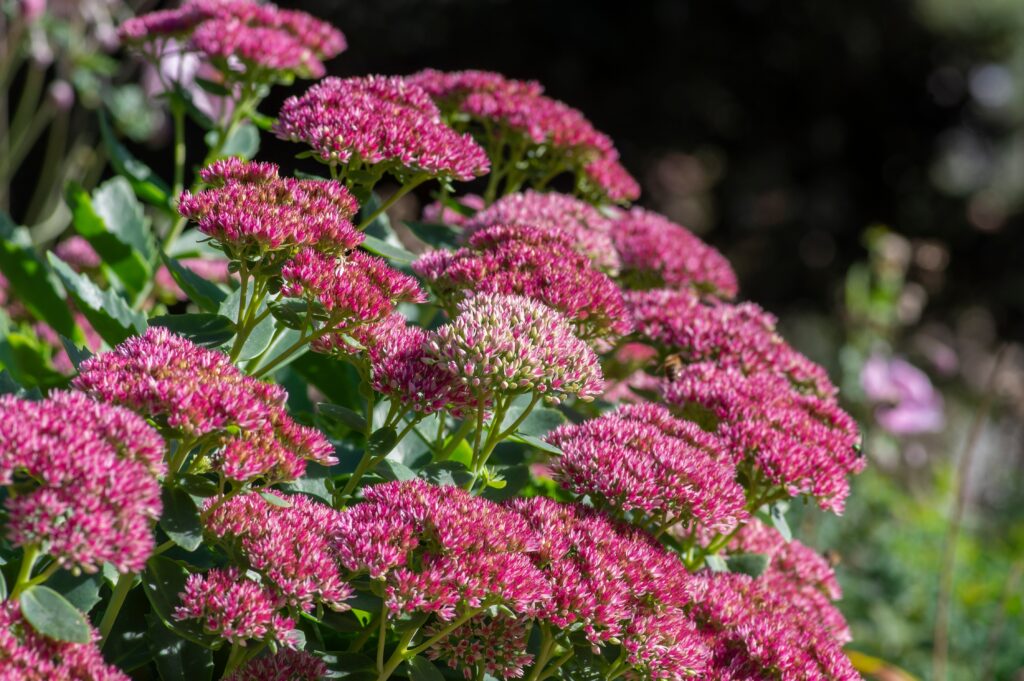
Sedum Autumn Joy is known for its clusters of pink buds that turn coppery red in fall. It takes about 60 to 90 days to bloom after early summer growth begins. This plant is a succulent, so it thrives with minimal watering. Its blooms often last until the first frost. Many gardeners enjoy its ability to attract butterflies late in the year.
It grows best in full sun and tolerates poor soil conditions. Sedum pairs well with ornamental grasses for striking fall displays. Its sturdy stems rarely need staking, making it low maintenance. When left standing, dried flower heads add texture to winter gardens. This makes Sedum Autumn Joy a dependable late bloomer.
Helenium (Sneezeweed)
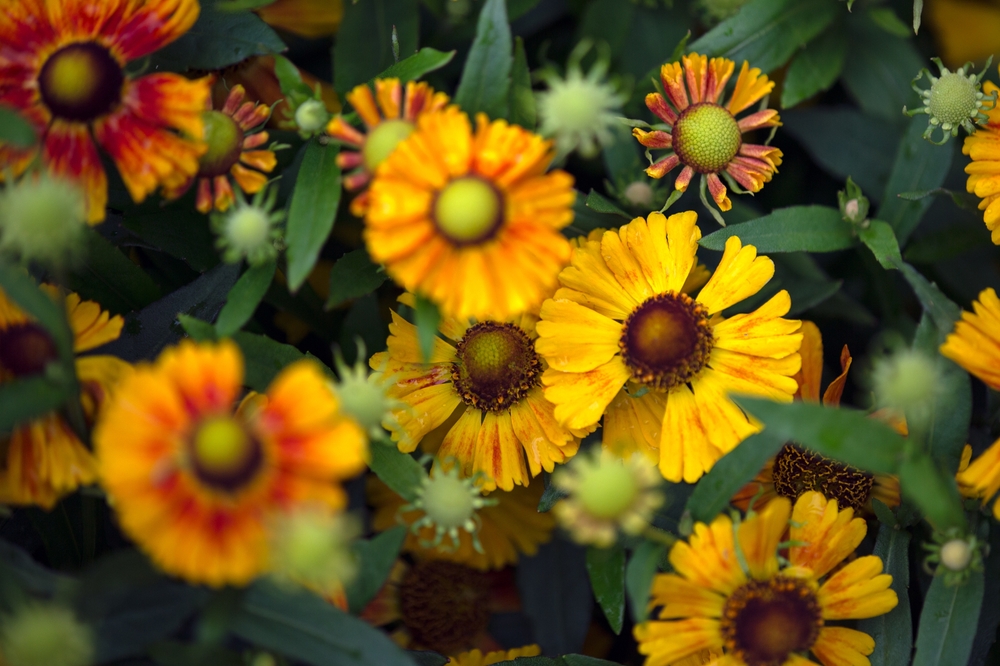
Helenium blooms from late summer into fall with daisy-like flowers. It takes about 90 to 120 days from planting to flowering. Its colors range from yellow and orange to red, often with a darker center. The blooms appear in abundance and can last for several weeks. Gardeners appreciate its ability to brighten up autumn beds.
This plant prefers moist soil and full sun. It is excellent for cutting, as the flowers last long in vases. Regular deadheading encourages more blooms. Helenium is also a favorite of bees and butterflies in the late season. Its vibrant color makes it stand out when many flowers have faded.
Russian Sage
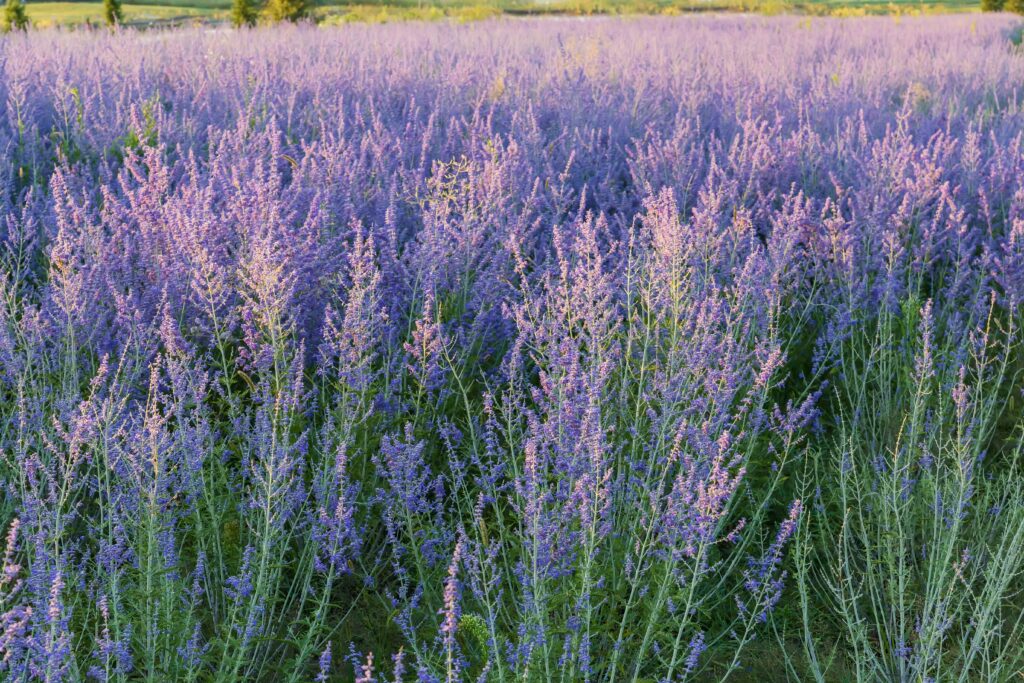
Russian sage produces spikes of lavender-blue flowers from late summer through fall. It generally takes about 12 to 15 weeks to bloom from planting. The airy, aromatic foliage adds texture to gardens. It thrives in hot, dry conditions, making it drought-tolerant. Many gardeners plant it to complement other late bloomers.
This plant grows well in full sun and sandy soil. It can reach up to four feet in height, creating a dramatic display. Its long bloom period ensures color well into autumn. Russian sage also attracts bees and hummingbirds. Once established, it requires little care apart from pruning in spring.
Goldenrod
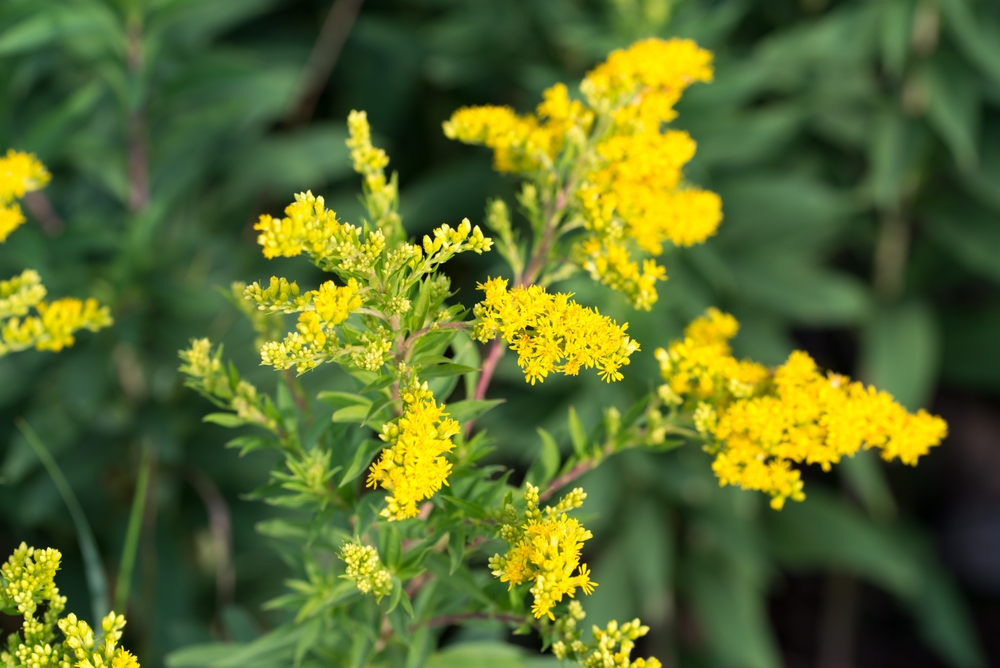
Goldenrod lights up gardens with tall spikes of yellow flowers from August to October. It typically takes about 90 to 100 days to bloom. Often mistaken as a cause of allergies, it is actually insect-pollinated, not wind-pollinated. Goldenrod attracts butterflies and bees late in the season. Its bright clusters stand out in fields and garden beds alike.
This hardy perennial prefers full sun and tolerates various soil types. It can spread quickly, so many gardeners plant it in controlled areas. Its blooms last well into fall, often overlapping with asters. Goldenrod makes an excellent cut flower for arrangements. It is a reliable plant for adding bold color to autumn gardens.
Toad Lily (Tricyrtis)
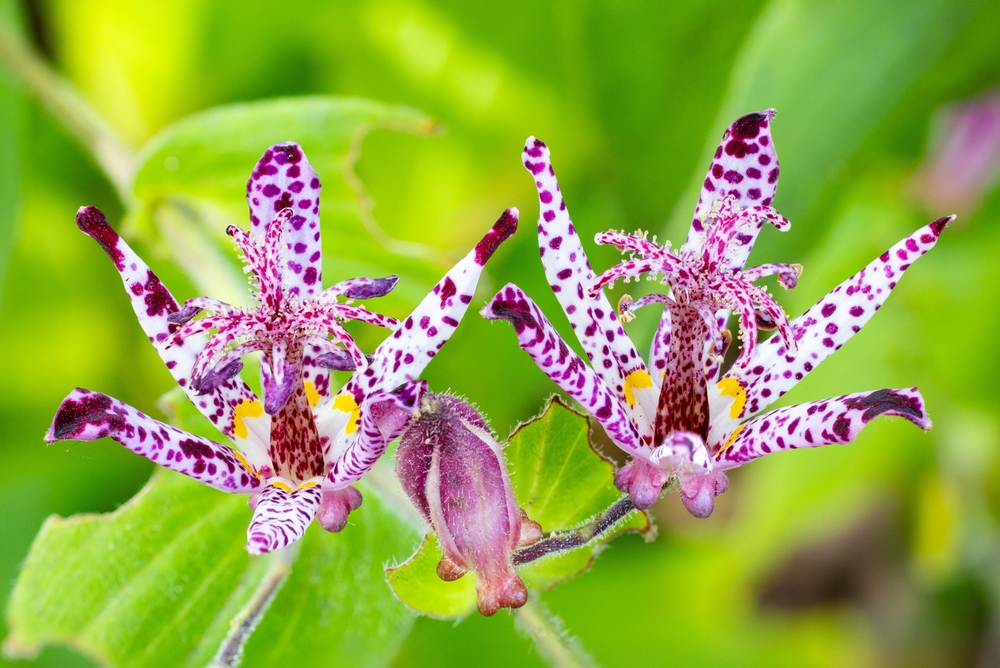
Toad lilies bloom in late summer through fall with orchid-like spotted flowers. They take about 120 days from planting to flowering. Their blooms are small but very decorative, often in shades of purple and white. These plants add unique detail to shaded areas of the garden. They are popular for bringing surprise color to autumn borders.
Toad lilies prefer moist, rich soil and partial to full shade. Their delicate flowers are best enjoyed up close. They can form clumps that expand year after year. Gardeners often use them in woodland gardens or shaded paths. Their late blooming habit keeps interest alive even as leaves start to fall.
Montauk Daisy
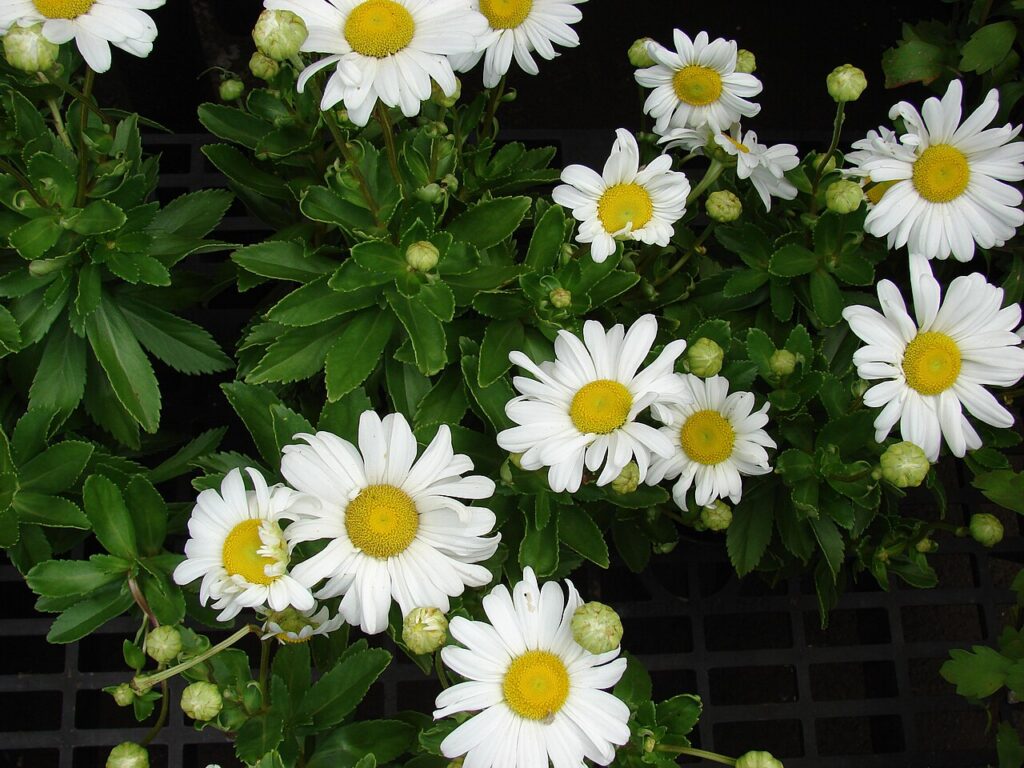
Montauk daisies bloom from late summer into October with crisp white petals and yellow centers. They usually take about 90 to 120 days to flower after spring planting. Their sturdy nature makes them reliable late-season performers. The blooms stand out against their thick, leathery leaves. Many gardeners value them for their clean look late in the year.
These daisies thrive in full sun and sandy soil. They tolerate salt, making them excellent for coastal gardens. Regular pruning in summer encourages more flowers in fall. They often bloom right until the first frost. Montauk daisies are also long-lasting when cut for vases.
Caryopteris (Bluebeard)
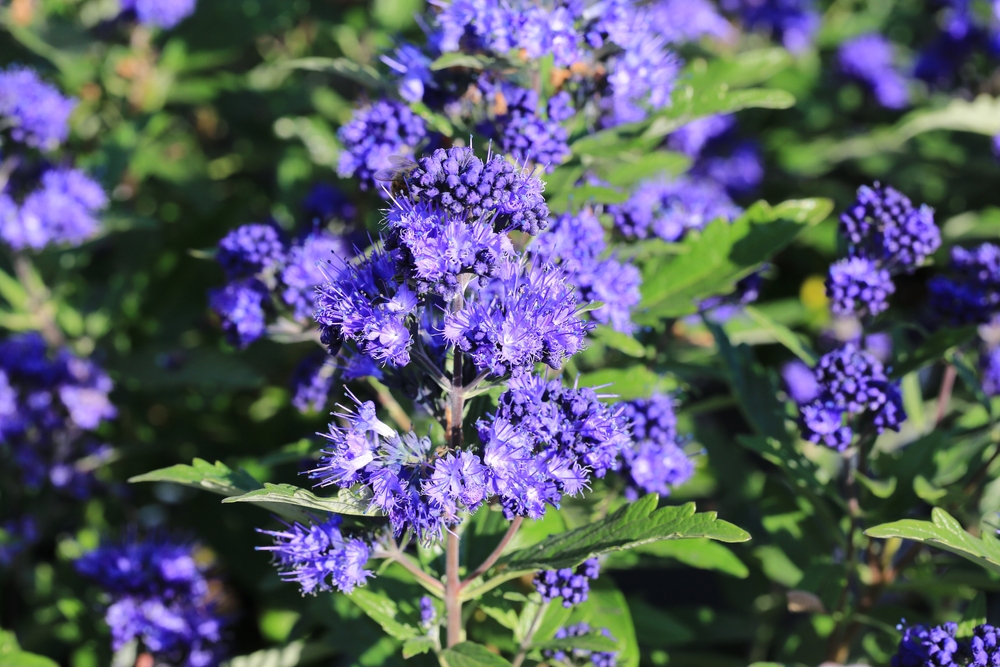
Caryopteris produces clusters of blue flowers in late summer and fall. It takes about 100 days from planting to bloom. Its aromatic foliage adds extra appeal in gardens. The vibrant blue color is rare in late-blooming plants. Many people grow it to attract bees and butterflies.
This shrub prefers full sun and well-drained soil. It remains compact, usually reaching about three feet tall. It pairs well with goldenrod and mums for fall color combinations. Caryopteris blooms last until frost, extending garden interest. Pruning in early spring helps maintain a neat shape.
Saffron Crocus
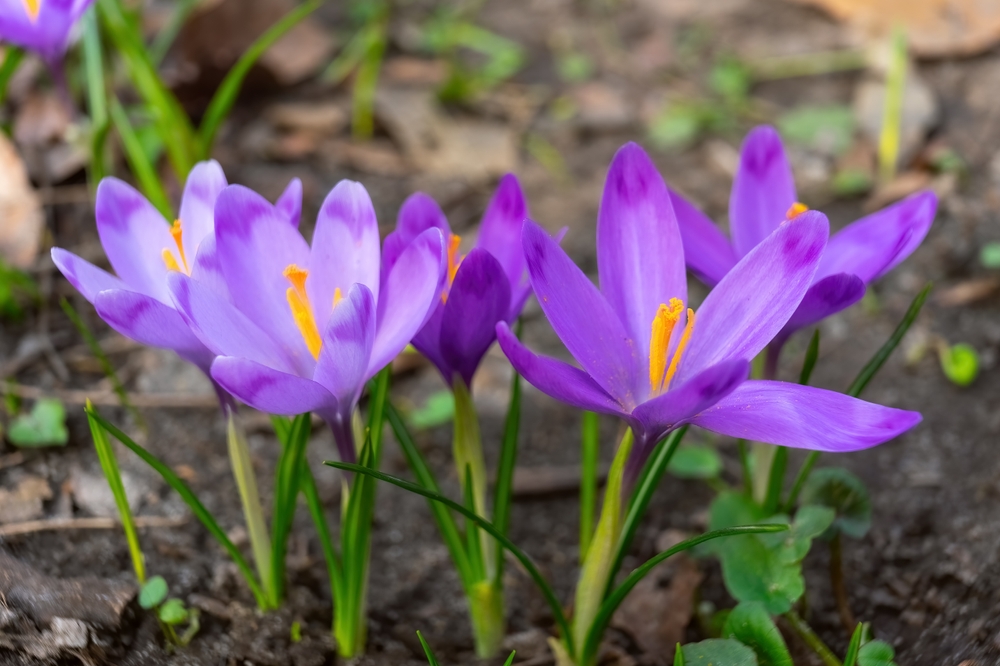
Saffron crocus blooms in fall with delicate purple flowers. They typically bloom within 40 to 60 days of planting bulbs in summer. Each flower produces red stigmas, which are harvested as saffron spice. The flowers appear suddenly and last for about two weeks. Gardeners often grow them for both beauty and culinary use.
These crocuses prefer well-drained soil and full sun. They are hardy in warmer climates but may need protection in colder areas. Planting in clusters creates a stronger display. The flowers attract little maintenance, aside from seasonal care. Saffron crocuses bring both color and a useful harvest to fall gardens.
Turtlehead (Chelone)
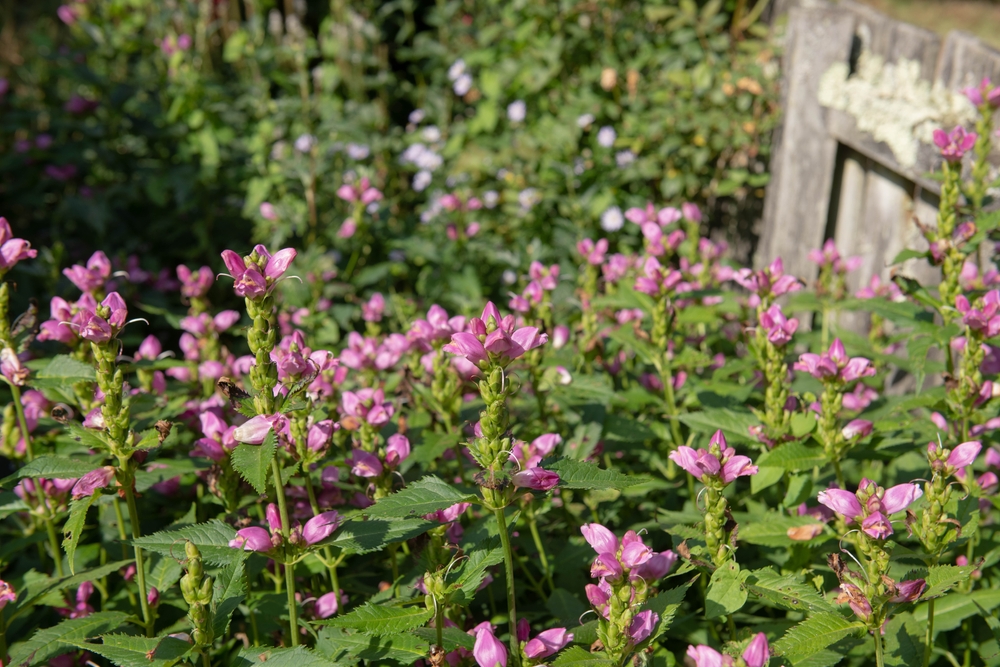
Turtlehead blooms in late summer and early fall with pink or white flowers shaped like turtle heads. It generally takes about 120 days to flower. This plant thrives in moist soil and is common near streams or ponds. The upright flower spikes add structure to gardens. It is appreciated for blooming when many other perennials are fading.
Turtlehead grows best in partial shade but tolerates sun with adequate water. It attracts hummingbirds and butterflies with its nectar. The blooms last for several weeks, brightening shaded spots. Gardeners enjoy its hardy nature and long lifespan. It is a dependable choice for adding fall color in damp areas.
Colchicum (Autumn Crocus)
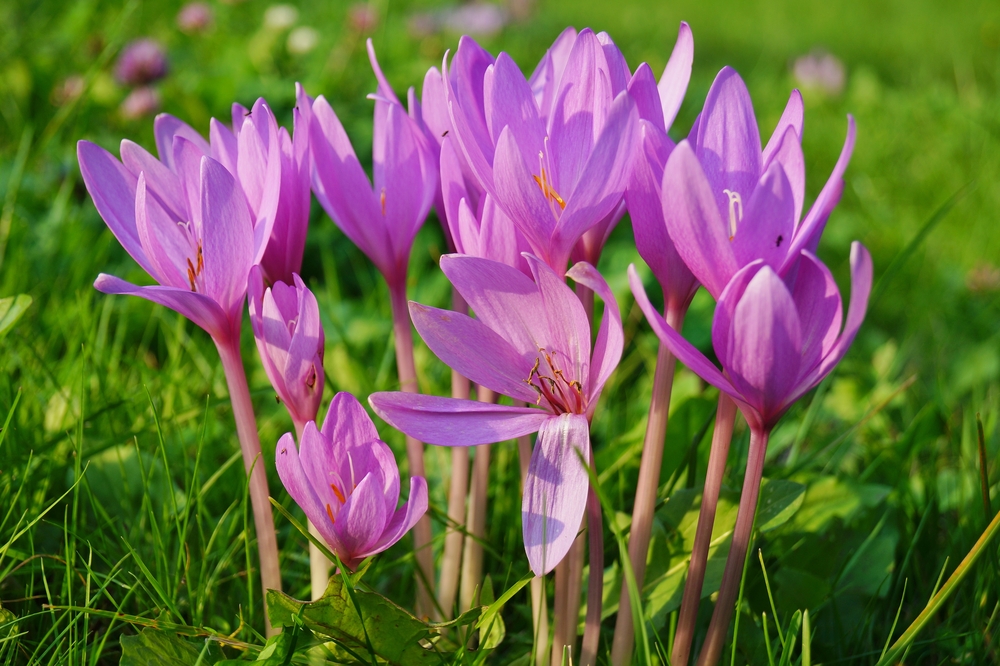
Colchicum blooms in fall with crocus-like flowers in shades of pink, lavender, and white. They typically flower within 70 to 90 days of planting. Unlike spring crocuses, they bloom without leaves, creating a striking look. Their sudden appearance makes them a surprise in autumn gardens. They often bloom from September to October.
These bulbs prefer well-drained soil and full sun. They are best planted in early summer for fall flowering. Once established, they return each year without much care. Their blooms last about two weeks, adding bursts of color. Colchicum works well in rock gardens and borders.
Heliopsis (False Sunflower)
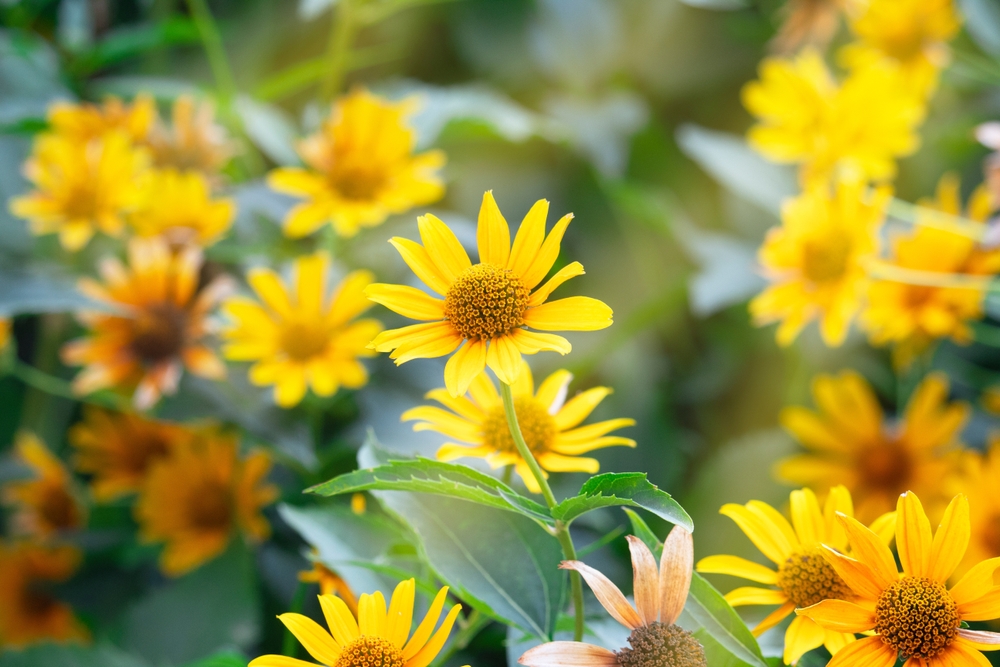
Heliopsis resembles sunflowers but blooms late into summer and fall. It takes about 90 to 100 days from planting to flower. Its bright yellow petals surround dark centers, providing cheerful color. This plant can grow up to five feet tall, making it a bold presence in gardens. Many gardeners use it for cut flowers because it lasts well indoors.
Heliopsis grows best in full sun and fertile soil. It is drought-tolerant once established. Deadheading spent blooms can encourage longer flowering. It pairs nicely with asters and ornamental grasses. This makes it a versatile choice for fall displays.
Boltonia (False Aster)
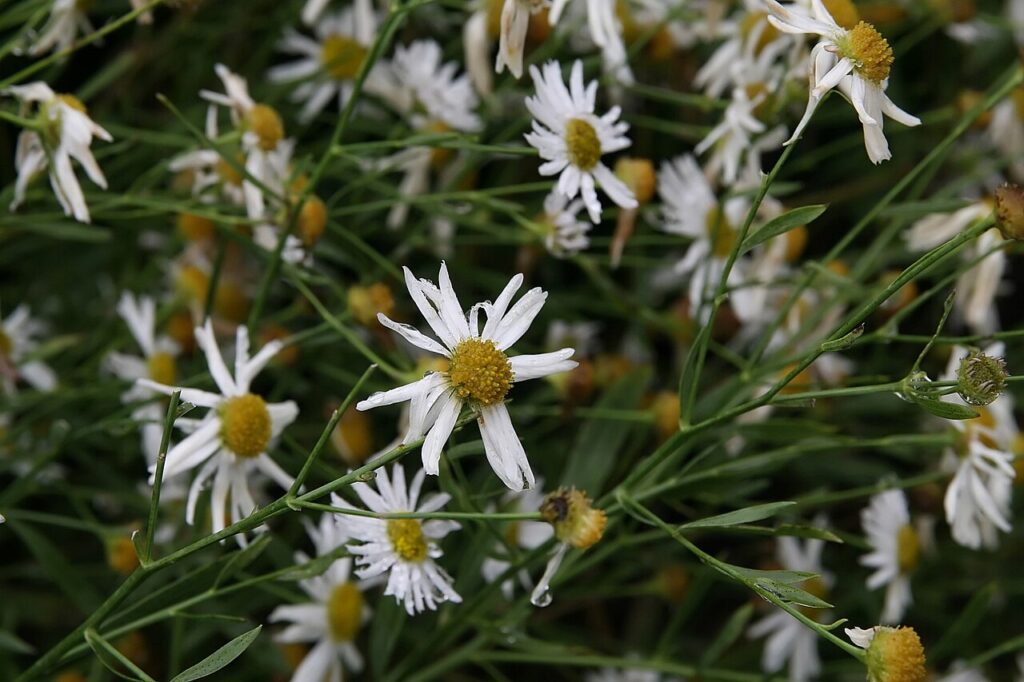
Boltonia blooms in late summer through fall with small daisy-like flowers. It takes about 90 to 120 days to reach flowering. The blooms are usually white or pale lavender, covering the plant in abundance. It creates a cloud-like effect in garden beds. Many gardeners plant it to add a soft texture to fall displays.
Boltonia thrives in full sun and well-drained soil. It can spread quickly, so it may need dividing every few years. Cutting back stems in early summer encourages fuller growth. The flowers last until frost, extending garden interest. They are also popular with late-season pollinators.
Cyclamen Hederifolium
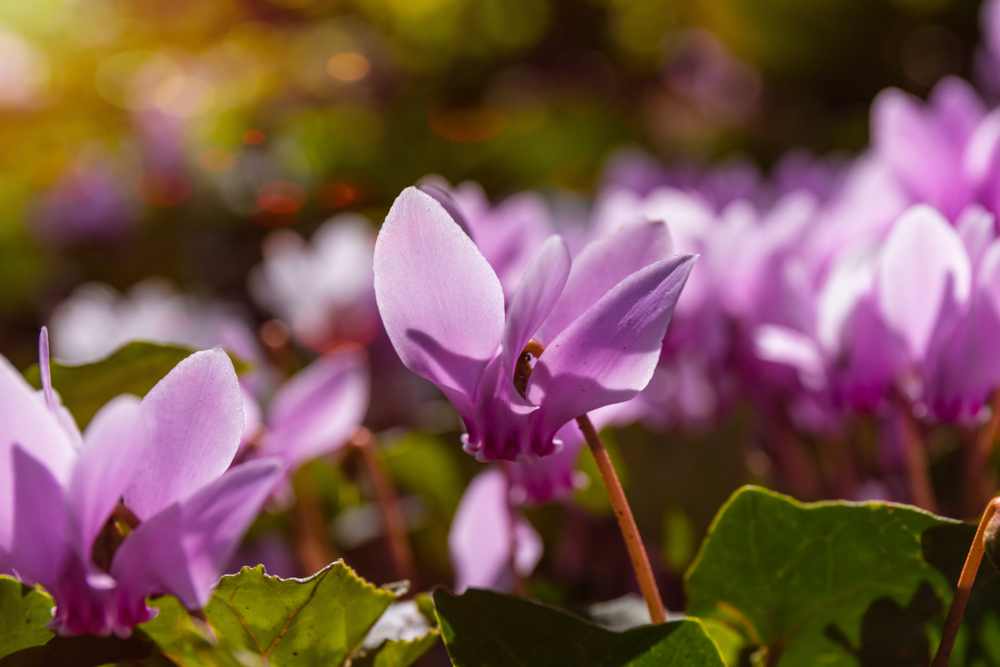
Cyclamen hederifolium blooms in fall with delicate pink or white flowers. It typically flowers about 90 to 120 days after planting tubers. Its marbled foliage appears after flowering, adding visual interest. These plants are small but eye-catching in shaded garden corners. Many gardeners value them for their unusual bloom time.
Cyclamen prefers well-drained soil and partial shade. It is suitable for woodland gardens or under trees. Once planted, it often spreads and returns each year. Flowers last several weeks, adding soft color to autumn displays. It is especially admired for its resilience in cooler weather.
Korean Chrysanthemum
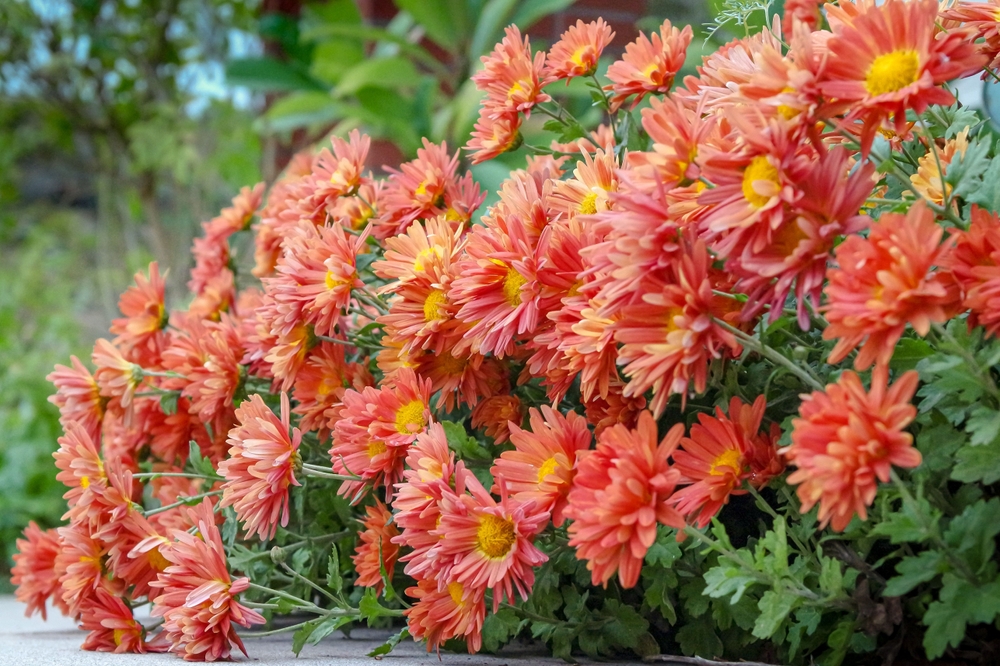
Korean chrysanthemums bloom in late fall with daisy-like flowers in many colors. They take about 14 to 16 weeks to flower from planting. These chrysanthemums are hardy and bred to withstand colder temperatures. Their extended blooming season makes them excellent for autumn gardens. They can flower until frost arrives.
They thrive in full sun and require regular watering during growth. Pinching in summer produces bushier plants with more flowers. They are widely used in borders and flower beds. Their late bloom makes them stand out when few flowers remain. They are popular among gardeners who want color lasting into the colder season.
Stonecrop (Sedum spectabile)
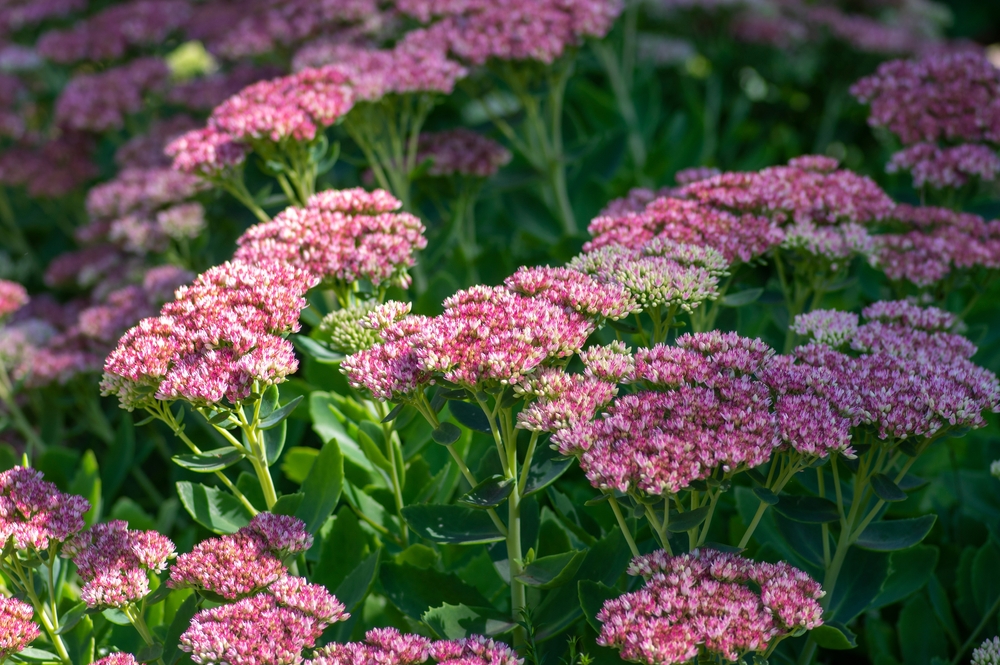
Stonecrop blooms in late summer through fall with clusters of pink to red flowers. It takes about 60 to 90 days from growth to bloom. Its thick, fleshy leaves make it drought-tolerant. The flowers attract butterflies and bees late in the season. Many gardeners enjoy its transition from bright pink to deep rust as fall progresses.
Stonecrop grows best in full sun and rocky or sandy soil. It requires little water and thrives in tough conditions. The blooms often remain attractive even when dried. It pairs well with ornamental grasses for fall displays. This makes it a practical and colorful late bloomer.
This article originally appeared on Avocadu.
